The Isle of Mull, nestled off the west coast of the Scottish Highlands, is a world-renowned destination for wildlife enthusiasts and photographers, thanks to its thriving populations of majestic eagles and captivating otters. This guide will help you experience the magic of observing Mull’s elusive otters in their natural habitat.
What Makes Mull Special for Otter Spotting?
Mull stands out as an otter-spotting haven due to the unique behavior of its coastal otters. Unlike otters in many other parts of the United Kingdom, which are predominantly nocturnal, Mull’s otters are largely active during daylight hours. Their activity cycles are primarily governed by the ebb and flow of the tides, rather than the time of day. This dependency on tidal conditions significantly increases the likelihood of daytime sightings for visitors.
Daytime Activity and Tidal Patterns
This fundamental difference in behavior transforms Mull into a highly desirable location for otter observation, as it allows for planning excursions around tidal charts to maximize viewing opportunities, rather than relying on brief, difficult glimpses at dawn or dusk. This adaptation also hints at a fascinating ecological specialization of Mull’s coastal otters to their marine environment, distinguishing them from their freshwater relatives.
Eco-Tourism Benefits
The presence of robust otter populations and their unique tidal activity further solidifies Mull’s position as a premier destination for wildlife tourism. The high probability of daytime otter encounters makes the island exceptionally appealing to nature lovers, setting it apart from other wildlife destinations. This strong appeal has, in turn, fostered a specialized eco-tourism industry on the island. Local guided tours, such as those offered by Mull Wildlife Tours and WildlifeonMull, are prime examples of this industry. This thriving sector not only enhances the visitor experience but also contributes significantly to the local economy, creating an economic incentive for the continued protection and conservation of Mull’s invaluable wildlife.
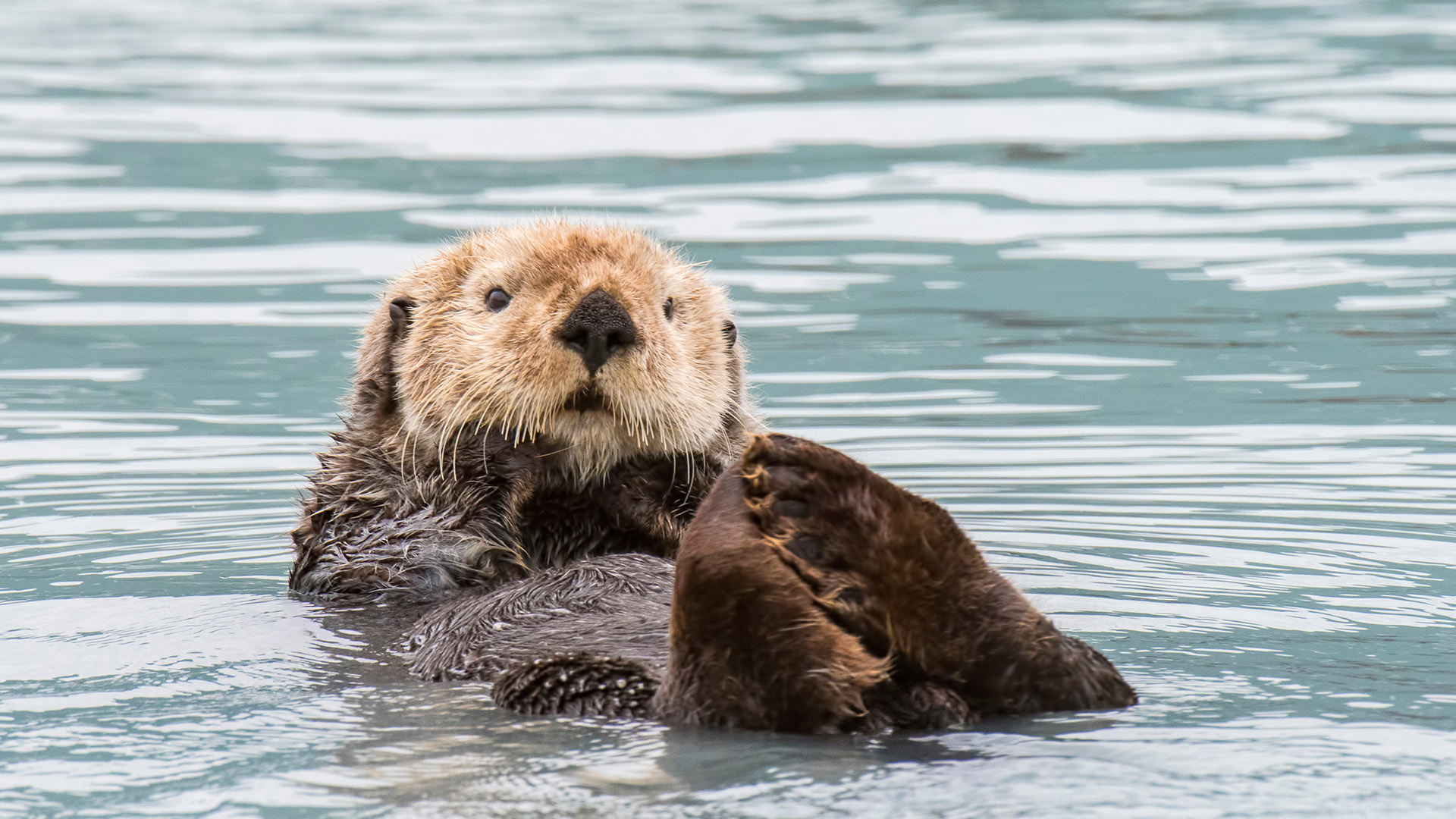
Understanding Otter Behavior and Biology
To truly appreciate and successfully locate otters, a foundational understanding of their biology and behavior is essential. The Eurasian otter (Lutra lutra) is a powerful top predator, typically measuring around 90cm in body length with an additional 45cm tail, and can weigh approximately 10kg. These animals can live for up to 10 years. Their physical form is exquisitely adapted for an aquatic existence, featuring webbed feet for propulsion, dense fur that provides exceptional insulation against cold waters, and the remarkable ability to close their ears and nose when submerged.
Diet and Foraging
Otters are primarily carnivores, with their diet heavily reliant on fish. However, they are opportunistic feeders and will readily consume other aquatic animals such as waterbirds, amphibians, crabs, and mussels. Their sharp teeth and powerful jaws are particularly well-suited for cracking open the shells of shellfish. Due to a high metabolic rate, otters require a constant intake of energy, consuming approximately 15% of their body weight daily and dedicating between three to five hours each day to foraging.
Reproduction and Social Behavior
While generally solitary creatures, they do come together during the breeding season. Females give birth to their young, known as ‘cubs’, in underground burrows called ‘holts’. These young otters are surprisingly agile learners, entering the water by just 10 weeks of age. On fortunate occasions, observers may even witness family groups playing together in the shallow waters or on seaweed-covered rocks.
Habitat Preferences and Observation Tips
Understanding the otters’ high metabolic rate and their need to consume a significant portion of their body weight daily, coupled with their physiological requirement for freshwater to clean their coats, provides crucial clues for successful observation. This means otters will be actively foraging for substantial periods each day, and their preferred coastal habitats will likely include access points to freshwater. This knowledge refines the general advice to look “everywhere along the coastline”.
Instead, prime spotting locations become more specific: rocky shores that are not only rich in marine prey but are also situated near freshwater outflows, such as burns or streams, where otters can both hunt and perform essential grooming. Observing active feeding behavior—indicated by repeated diving, surfacing with prey, and consuming it on rocks—becomes a key signal of their presence and activity, guiding the observer’s focus.
Distinguishing Otters from Look-Alikes
On Mull, it is possible to encounter other marine mammals that might be mistaken for otters, particularly seals and mink. Knowing the key differences is vital for accurate identification:
Otters vs. Seals
When observed in the water, otters can be differentiated from seals by their long, furry tail, which frequently becomes visible as they dive, and their distinctly pointier face. Seals, in contrast, possess a more rounded facial structure. At the surface, an otter typically presents as a small head followed by a larger body lump, keeping its body relatively flat to the water. They are capable of holding their breath for up to 30 seconds. When an otter dives, one will usually observe the curve of its back, followed by a flick of its tail and a small splash. Common seals, conversely, can hold their breath for a much longer duration—between five and ten minutes—and frequently show only their head above the surface, as if sniffing the air. Their dives are generally less splashy, and no tail will be evident.
Otters vs. Mink
Mink are considerably smaller and lighter than otters, typically darker in fur color, and may exhibit a distinctive white patch under their chin. Otters are noticeably larger, with a more powerful build, paler grey-brown fur, and a broader snout, chest, and throat area.
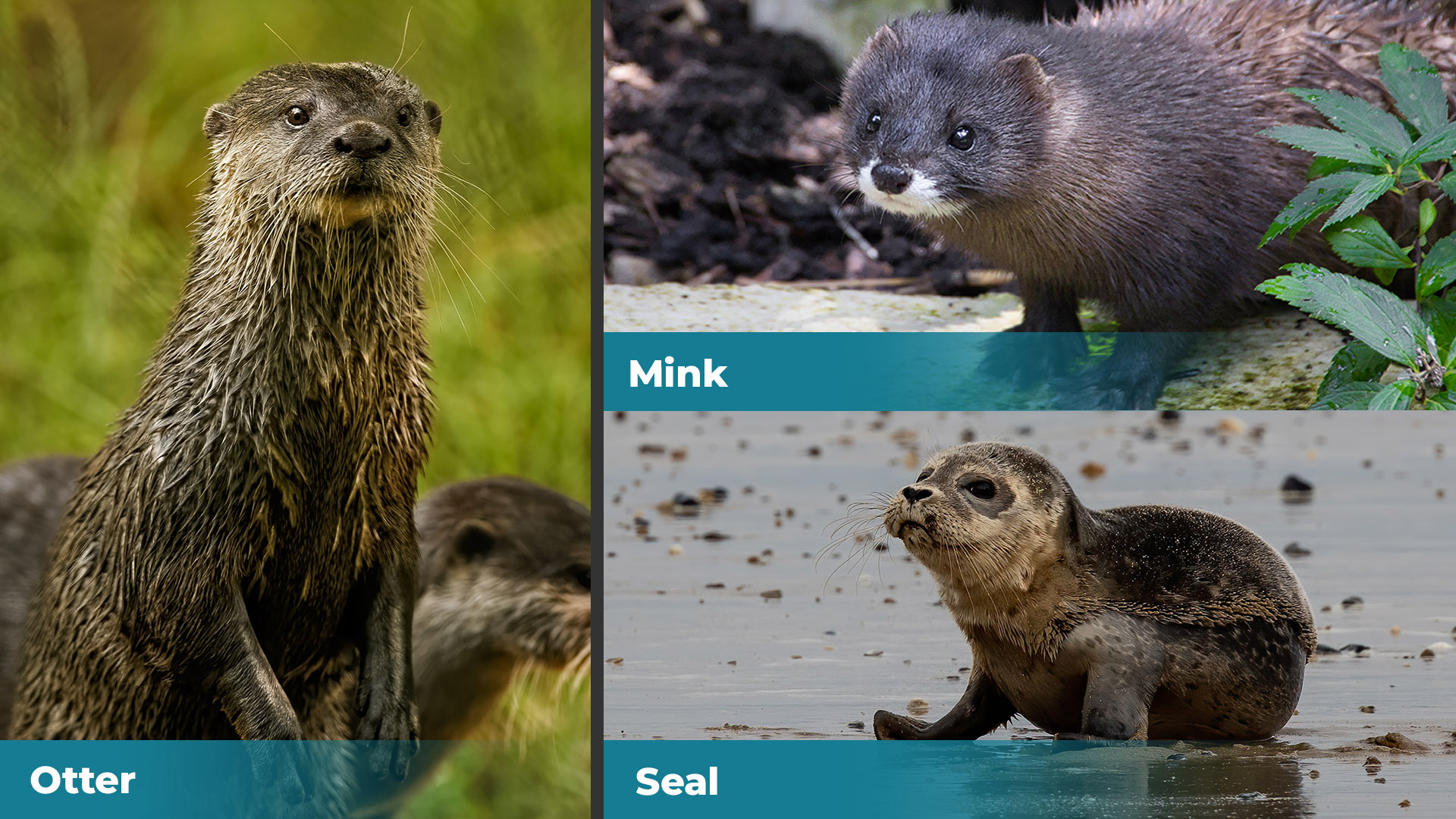
Recognizing Signs of Otter Presence
Even if a direct sighting of an otter does not occur, finding signs of their activity is a strong indicator of their presence and can effectively guide a search.
Footprints
Along riverbanks and coastal waterways, look for their distinctive five-toed footprints, which typically measure about 6-7cm in length.
Spraints (Droppings)
Otters deposit their droppings, known as ‘spraints’, in prominent locations such as fallen trees, weirs, and under bridges. These spraints serve as ‘scented messages’, which are crucial for territorial marking and attracting mates.
What Spraints Reveal
A unique characteristic of otter spraints is their content—they often contain visible fish bones—and their distinctive, surprisingly pleasant smell, frequently described as reminiscent of Jasmine tea. The detailed nature of otter spraints—their deliberate placement, visible contents, and unique aroma—reveals their importance beyond a simple indicator of presence. These “scented messages” point to a sophisticated chemical communication system that is vital for the otters’ social dynamics, even for largely solitary animals, and is crucial for their reproductive success. This suggests a hidden layer of interaction within the otter population.
Conservation Insights
For wildlife conservationists, systematically monitoring spraint locations and analyzing their contents provides invaluable long-term data on otter population distribution, dietary habits, and overall health. This non-invasive method directly contributes to conservation strategies and allows for tracking population trends.
Visitor Experience
For visitors, encountering spraints offers a tangible, respectful connection to the wildlife, fostering a deeper appreciation for the animals’ secretive lives, even if a direct sighting does not occur.
Where and When to Find Otters on Mull
Prime Locations and Habitats
Otters are remarkably widespread across Mull’s coastline; indeed, “just about every mile” of the shore could potentially be home to these creatures. They exhibit a strong preference for areas rich in seaweed and rocks, as these habitats offer both ample cover and a plentiful supply of prey. Otters are often observed resting among the seaweed or on the rocks, where they may also be seen feeding or grooming. For those exploring independently, slow driving along shorelines with frequent stops to scan the water and rocks is recommended.
Specific areas frequently mentioned for otter sightings include:
- Various lochs
- General coastal areas
- Sea lochs
- The west coast, particularly around Loch na Keal
- Tobermory Bay
- Aros Park
- Dervaig
- Calgary Bay
- Salen Bay
- Ulva
- Garmony
- Knock (at the head of Loch na Keal)
- Lochdon
- Fishnish
- Ardtun
While otters are found “just about everywhere” along Mull’s extensive coastline, this broad distribution presents a strategic challenge rather than a guarantee of easy sightings. It implies that no single “hotspot” will automatically ensure an encounter, but rather that consistent, patient, and wide-ranging observation across suitable habitats is key to success.
This necessitates a methodical approach, such as slow driving and frequent stops along shorelines, combined with careful scanning, as recommended by experienced observers. This understanding underscores that success in otter spotting is less about pinpointing a single location and more about sustained effort and keen observation across the island’s diverse coastal environment.
This also highlights the significant value of local guides who possess extensive “field time” and intimate knowledge of specific territories, which can greatly enhance a visitor’s efficiency in locating otters despite their widespread presence.
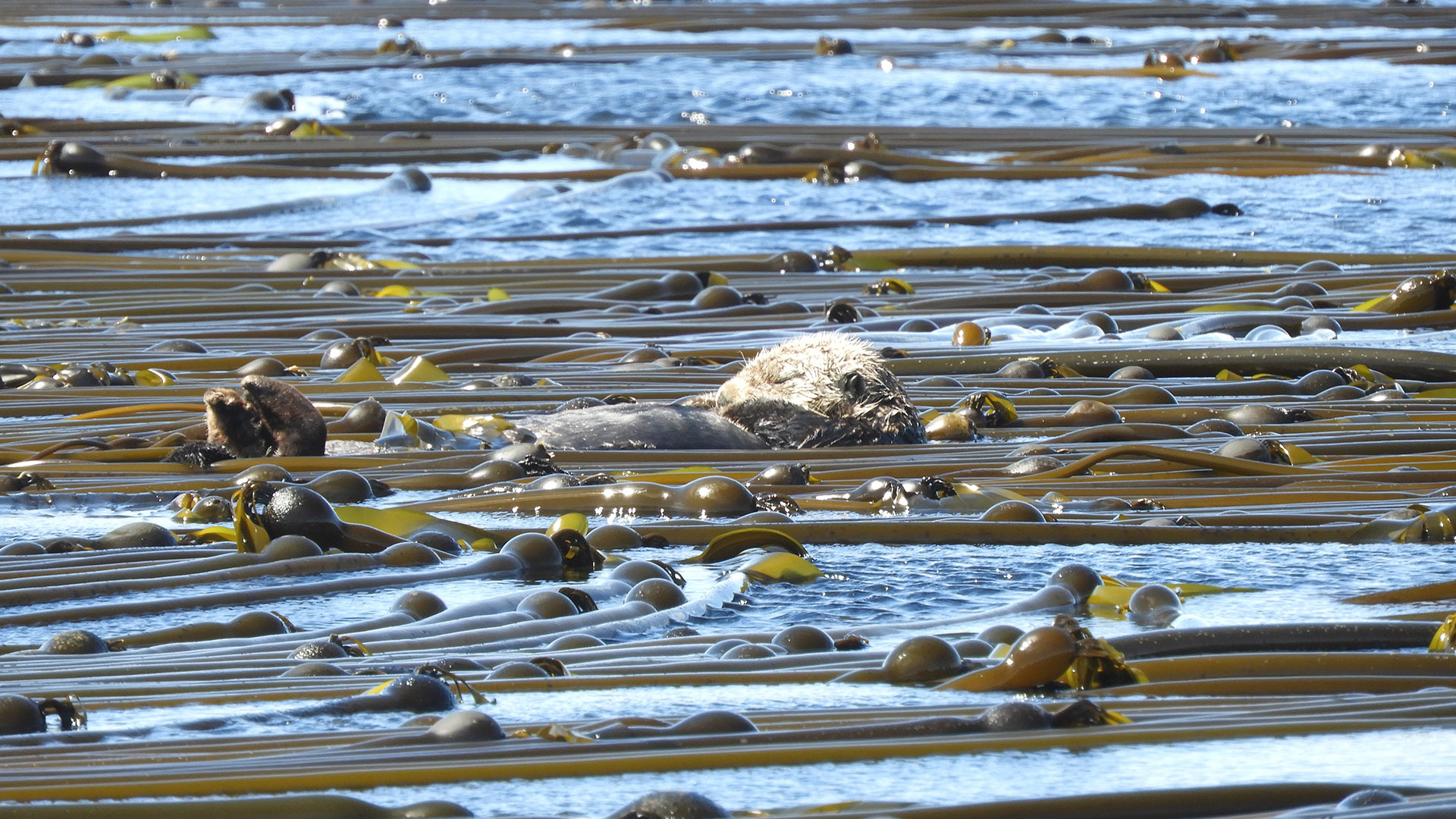
Optimal Timing
Otter activity on Mull is notably more dependent on the state of the tide than on the time of day. The best chances for a sighting typically occur during an incoming tide on a rocky shore, particularly within the window of two to four hours before high tide. As high tide approaches, otters often retreat to their holts. Conversely, some sources suggest that a few hours either side of low tide can also be optimal, especially for photographers. This may be due to more exposed rocks and pools at low tide, which can concentrate prey and make otters more visible against the landscape.
Interpreting Tidal Behavior
This apparent variation in optimal tidal conditions—incoming tide versus around low tide—is not a contradiction but rather reflects different optimal conditions for various otter behaviors or visibility. The incoming tide, particularly 2–4 hours before high tide, likely corresponds to periods when otters are actively hunting as prey becomes accessible in newly covered areas, or as they move along the rising waterline. Low tide, or a few hours either side, might be ideal for spotting them on exposed rocks, foraging in rock pools, or bringing larger prey items to shore, where they are more visible against the terrain rather than just a head in potentially choppy water.
This suggests that a multi-faceted approach to timing, based on the specific type of observation desired (e.g., active hunting versus resting or feeding on shore), will yield the best results. While tidal conditions are paramount, general times of day also play a role. Dawn and dusk are often suggested as optimal, with otters being most active during the early morning and late afternoon.
Year-Round Observation
Otters can be observed year-round on Mull. However, it is worth noting a brief period of a couple of weeks in March when otters might be less visible in the lochs, as they tend to feast on spawning frogs at night during this time. Visiting Mull during the winter months can offer an exceptional experience, as wildlife remains very active and there are fewer tourists, providing a more intimate viewing opportunity.
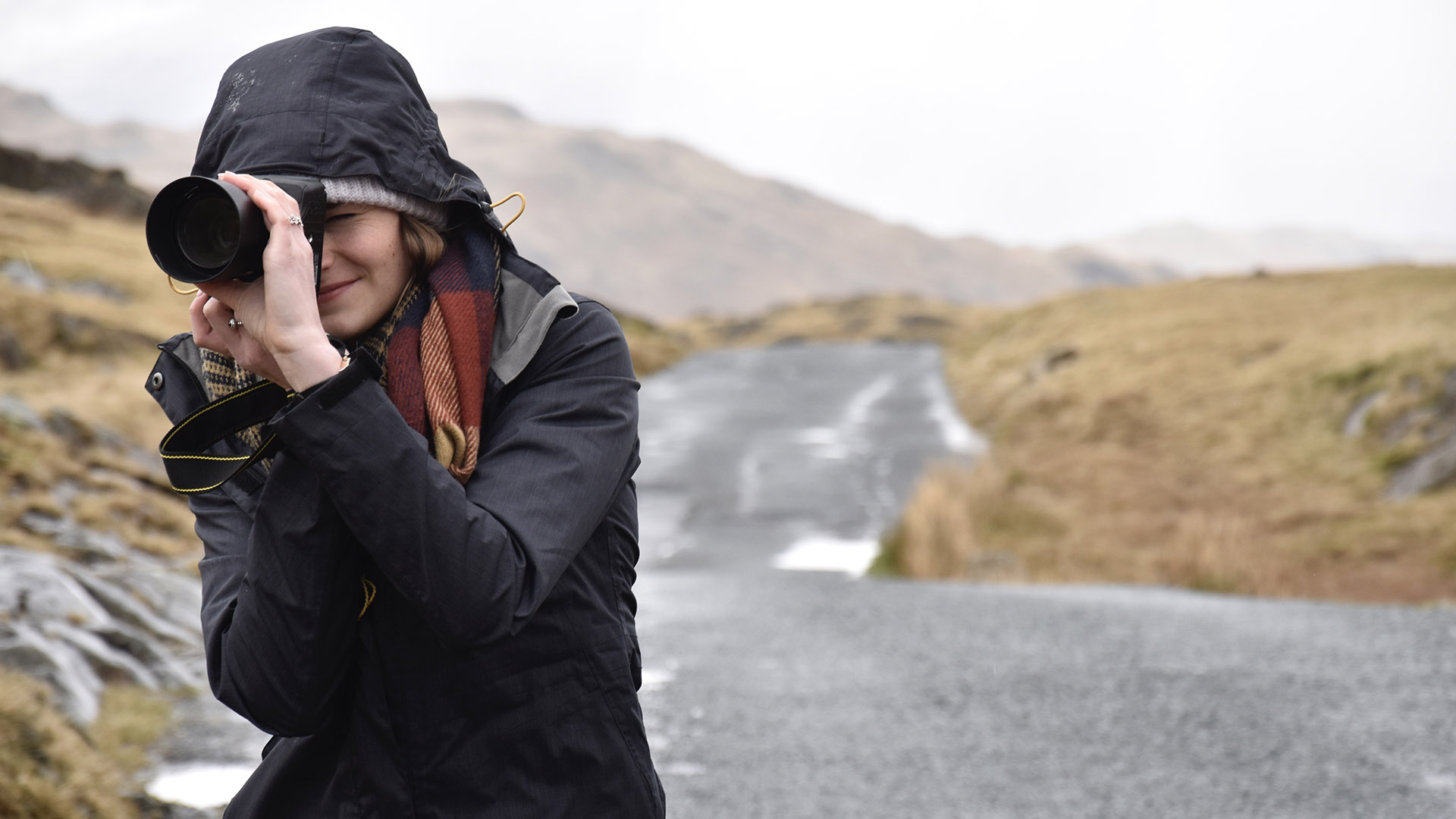
Essential Gear for a Successful Spotting Trip
Equipping oneself appropriately significantly enhances the chances of a successful and comfortable otter spotting trip on Mull. The island’s often-inclement weather and the elusive nature of otters necessitate thoughtful preparation.
Optics
Binoculars are almost indispensable for scanning distant areas to locate otters. They are highly effective for sweeping shorelines and water bodies, helping to discern subtle movements or shapes that might indicate an otter’s presence. A good quality pair, such as 8×42 Viking Binoculars, is recommended for their balance of magnification and field of view. Many guided wildlife tours on Mull also provide high-quality binoculars and excellent telescopes for their clients’ use, further enhancing the viewing experience.
Photography Equipment
For those keen on photographing otters, a long telephoto lens is highly recommended. This type of lens allows photographers to capture detailed images from a respectful distance, which is crucial given that close encounters with wild otters are rare and should not be actively sought.
Camera Settings
Furthermore, knowing how to operate a camera in its quietest setting is beneficial to minimize any noise that could disturb the otters. The emphasis on using a long telephoto lens and quiet camera settings directly addresses the ethical considerations inherent in wildlife photography.
These tools enable the capture of high-quality images from a distance, thereby mitigating the ethical dilemma of obtaining a good shot versus potentially disturbing the animal. This approach encourages a culture of responsible wildlife photography, where the well-being of the animal is prioritized over the pursuit of a “perfect” but potentially harmful image, aligning with broader conservation principles.
Appropriate Clothing
Given the typically inclement weather conditions experienced on Mull, a waterproof cover for all gear is almost imperative. This cover should ideally be camouflaged or dark in color, avoiding bright plastics that could be conspicuous.
Clothing Recommendations
For personal attire, suitable clothing for stalking and prolonged outdoor observation includes Muckboots, waterproof trousers, a ghillie coat, a hat, and waterproof Sealskinz gloves. Warm, camouflaged clothing is also generally advised.
The strong emphasis on waterproof and camouflaged gear extends beyond mere equipment recommendations; it highlights the specific environmental challenges of Mull. Being well-prepared for rain and wet conditions directly impacts the duration and effectiveness of spotting efforts. If an observer is cold, wet, or their equipment is compromised, the trip will likely be cut short, significantly reducing the chances of a successful sighting.
Additionally, camouflage aids in the “stalking” technique by allowing for closer, less disruptive observation. Thus, the choice of gear is not just about comfort or performance, but about enabling sustained, comfortable, and effective observation within Mull’s often challenging climate.
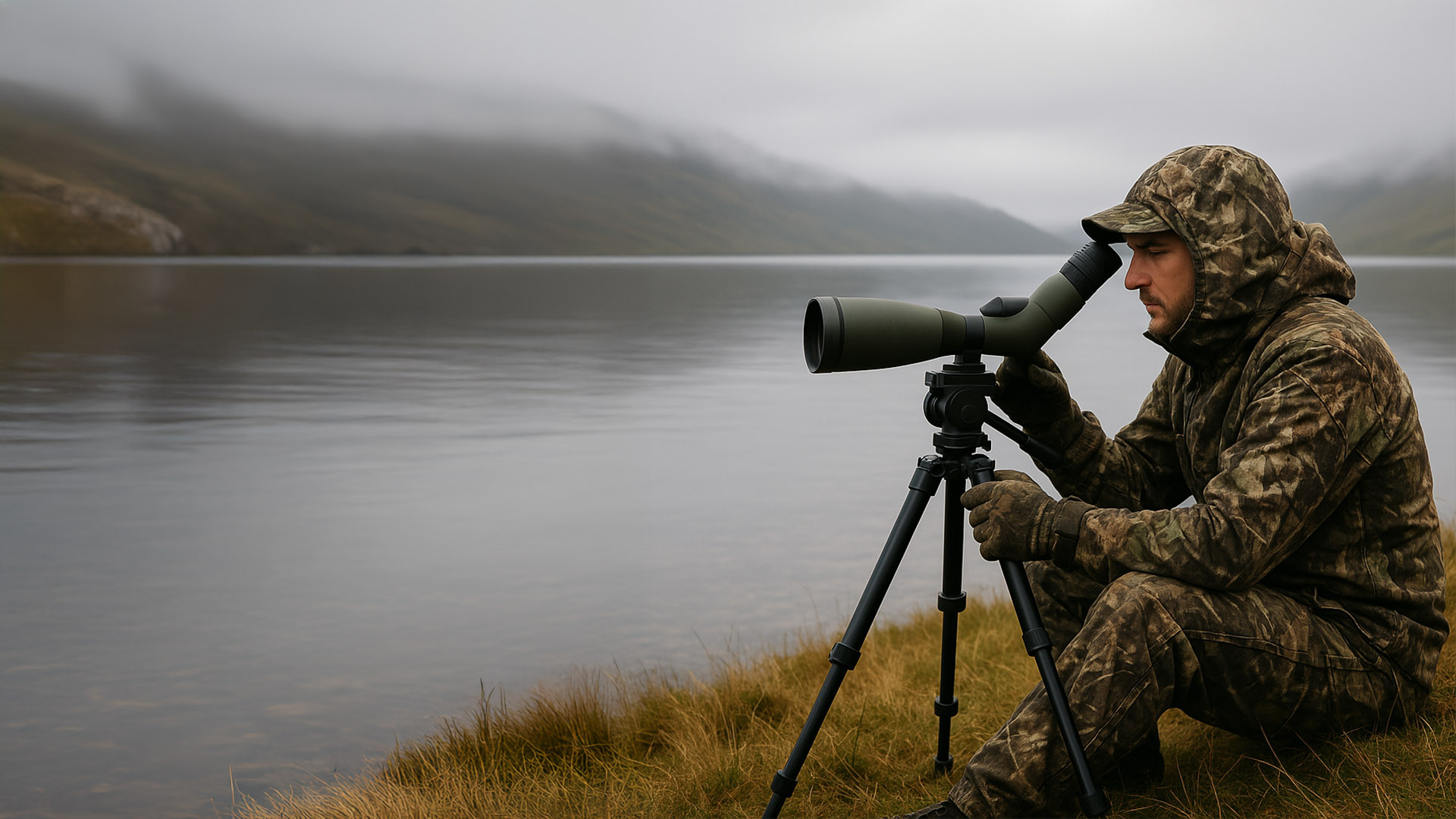
Mastering the Art of Otter Spotting: Techniques from the Field
Successful otter spotting on Mull demands a blend of patience, quiet observation, and deliberate movement. Otters are inherently wary creatures, and loud noises or sudden movements can easily startle them and cause them to flee. Therefore, moving extremely slowly and quietly along the shoreline is crucial to minimize any disturbance. Patience is indeed a key virtue in this pursuit.
Stalking Strategies
When attempting to approach a sighted otter, a fundamental strategy is to always walk into the wind, ensuring that the wind remains in the observer’s face. This prevents the otter from catching human scent, as otters possess a highly sensitive sense of smell and are acutely aware of disturbance. If an observer finds themselves upwind of the otter (meaning the otter is downwind of them), the best course of action is to move inland, remain still, and wait for the otter to pass.
Using Dive Times Strategically
Otters spend a significant amount of time underwater while hunting, typically diving for about 20 to 30 seconds. These dive times offer strategic windows for movement. Observers can use these periods to advance their position, but it is wise to move for a shorter duration than the otter’s average dive time (e.g., 15–20 seconds if the otter dives for 30 seconds). Additionally, trying to get low to the ground, ideally at eye level with the otter, helps to prevent them from seeing the observer and allows for a less intrusive view.
These detailed stalking techniques are not merely about getting closer; they are fundamentally about minimizing impact. The emphasis on downwind movement acknowledges the otter’s keen sense of smell as a primary defense mechanism. The dive time strategy demonstrates an understanding of their natural rhythm and vulnerability. This transforms otter spotting from passive observation into an active, respectful engagement with the animal’s natural patterns, embodying a responsible approach to wildlife interaction.
Scanning Methods
Effective scanning is paramount. When driving, maintaining a slow pace and making frequent stops along shorelines is an effective method. Spend a few minutes pausing in lay-bys to scan the water with the naked eye to get accustomed to spotting shapes and movements. Once something catches the eye, binoculars can then be used for a closer, more detailed look.
Spotting Camouflaged Otters
It is particularly important to scan seaweed-covered rocks, as otters blend in remarkably well with their surroundings. Their heads, when in the water, can also be easily mistaken for rocks. Once an otter is sighted from a vehicle, consider leaving the car and walking the coastline to get closer, always moving slowly and deliberately. Throughout the entire process, the primary goal must always be to avoid disturbing the animal; it is a guiding principle that no photograph or closer view is worth the cost of disturbance to the otter. Observers should never block an otter’s path, such as waiting beside a stream they use to leave a loch, nor should they disturb an otter that appears to be resting or sleeping.
Learning Over Time
The advice that “the more time one spends in the field, the more one will learn about the subject” highlights a deeper, iterative learning process inherent in wildlife observation. Prolonged time spent observing leads to a greater understanding of where otters frequently hunt, rest, and even breed, as well as how far out to sea they might venture during their foraging activities. This implies that otter spotting is not a singular event but a skill developed over time through repeated, patient observation.
It encourages a deeper connection with the local ecology and individual otter behaviors, moving beyond a simple checklist approach to a more nuanced understanding. This also reinforces the value of repeated visits to Mull or extended stays, subtly promoting the idea of becoming a more informed and responsible wildlife observer, potentially contributing to citizen science efforts by reporting sightings.
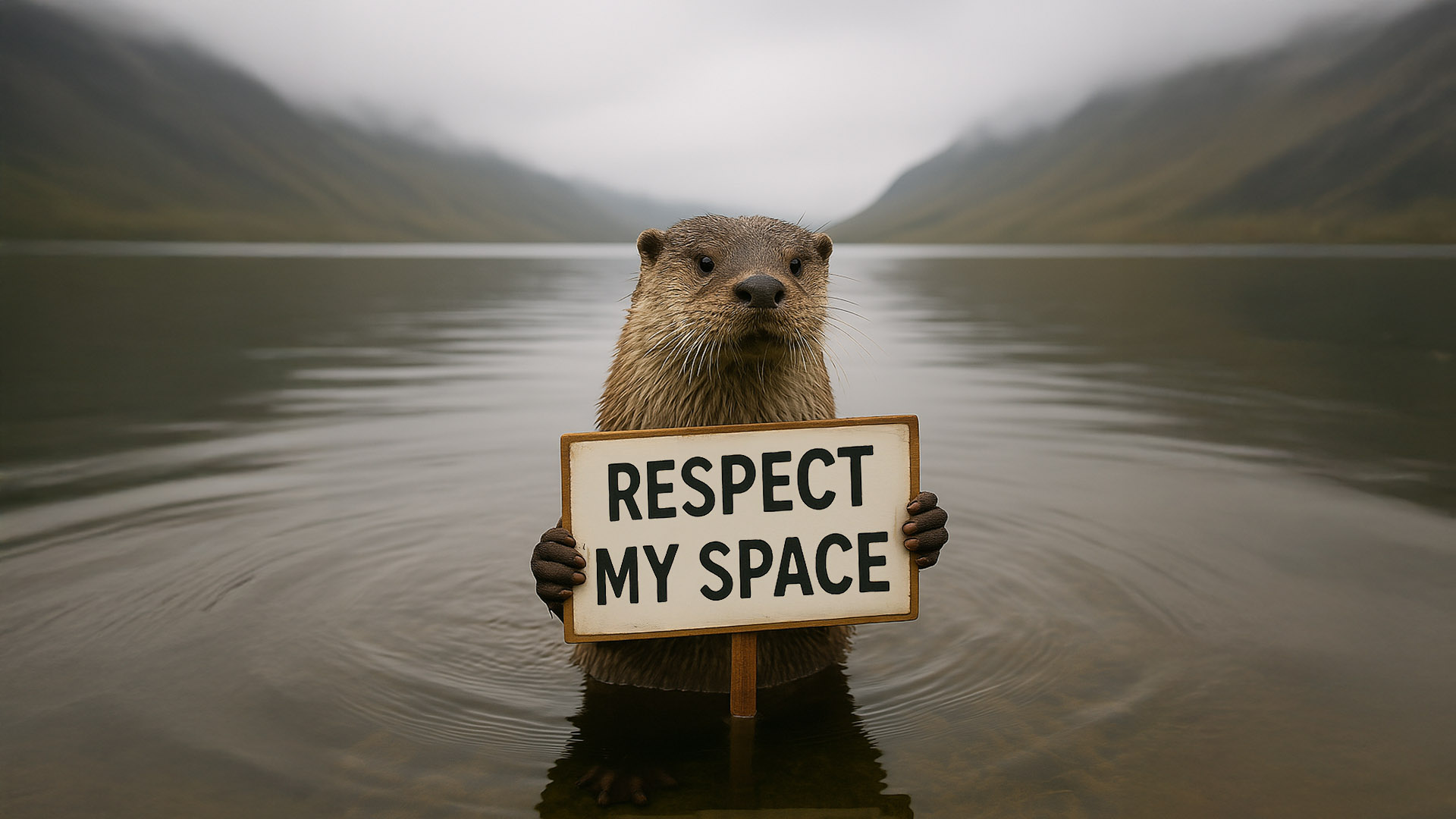
Ethical Viewing: Protecting Mull’s Otters
Responsible wildlife viewing is paramount to ensuring the continued well-being of Mull’s otter population. Adherence to ethical guidelines is not merely a suggestion but a critical responsibility for all visitors.
Maintaining Safe Distances
Giving otters ample space is fundamental. When on the water in a kayak or stand-up paddleboard (SUP), a minimum distance of five craft lengths should be maintained from otters. For larger vessels, such as sail or power boats, the recommended minimum distance is even greater, never approaching closer than 100 feet (equivalent to approximately 2.5 school buses). The larger the boat, the more space should be kept between the vessel and any resting otters. Furthermore, wild camping directly on the shoreline can inadvertently affect the behavior of local wildlife, including otters, seals, and wading birds.
Recognizing and Avoiding Disturbance
Observers must remain vigilant for any changes in an otter’s behavior, as these are clear indicators that one is too close. Signs of disturbance can include increased vigilance, altered foraging patterns, or fleeing. Direct approaches should always be avoided, as these can be perceived as a threat by otters; instead, one should aim to pass parallel to them. Patience is also crucial to prevent crowding or encircling otters, allowing them undisturbed access to their environment. It is equally important never to block an otter’s path, such as by waiting beside a stream they use to leave a loch, nor should one disturb an otter that is attempting to rest or sleep.
Safety Considerations and Rare Aggressive Encounter
On rare occasions, habituated otters may display aggression towards humans or pets, or even attempt to interact by climbing onto kayaks, paddleboards, or docks. This behavior is dangerous, as otters are carnivores capable of inflicting severe bites. Such otters, if they become a public safety risk, are likely to be removed from the wild.
What to Do if Approached by an Otter
If an otter approaches a craft, it is crucial to: Recognize the potential danger of the situation. Remain calm and actively discourage interaction. Paddle away from the otter to create distance. Make oneself appear large and noisy by splashing the water with a paddle to deter the otter. If these initial deterrents fail and the otter attempts to climb aboard, one should directly splash the otter with water and make noise by hitting the kayak with a paddle, but without making physical contact with the animal. If an otter approaches another member of a group, assistance should be offered to help them keep the otter off their craft using the same methods.
Avoiding Direct Contact
It is imperative not to attempt to touch or pet the otter, nor to pause to take pictures during such an encounter. Should all methods fail and the otter still attempts to climb onto the craft, a paddle or another object can be used to block access or gently push the otter off. While federal laws protect sea otters from harassment or injury without a permit, a gentle nudge to prevent harm to both the human and the otter is acceptable if necessary.
Dogs and Otters
Moreover, dogs should never be allowed to chase, harass, or interact with otters, as a dog can injure an otter, and an otter can easily harm or kill a dog. There is also a risk of disease transmission between pets, humans, and the otters.
Ethical Imperative
The repeated emphasis on otters being a protected species and the illegality of harassment elevates ethical viewing from a mere suggestion to a legal imperative. This implies that visitors have a duty to understand and adhere to these guidelines. The detailed instructions on what to do if an otter approaches are not just for personal safety but for the otter’s welfare and to prevent its removal from the wild. This reinforces the understanding that human actions have direct, significant consequences for individual animals and the broader population, making ethical viewing a critical component of conservation.
Legal Protection and Conservation Status
It is illegal to harm or disturb otters in Scotland, as they are a protected species. They are classified as “Near Threatened” on the IUCN Red List and are protected under the Wildlife and Countryside Act of 1981, as well as being a Priority Species in the UK Biodiversity Action Plan.
Why Feeding is Dangerous
Feeding otters should be strictly avoided, as this can disrupt their natural behavior and cause them harm. Even unintentional harassment or disturbance is illegal.
Long-Term Consequences of Human Actions
The warning about otters becoming habituated and potentially aggressive, which could lead to their removal from the wild, reveals a critical feedback loop in human-wildlife interaction. Human actions, such as getting too close or feeding them, can alter otter behavior. This change, in turn, puts the otter at risk of removal, a severe consequence for the individual animal.
This highlights the long-term, negative ripple effects of seemingly harmless or well-intentioned interactions. This understanding serves as a call to action for visitors to proactively prevent such scenarios, emphasizing that responsible behavior is paramount for the long-term survival and wildness of Mull’s otter population. It frames the visitor as a guardian, not just an observer.
Ethical Wildlife Photography
Photographers keen to capture images of Mull’s otters must maintain a respectful distance. Any approach or behavior that provokes a response from the otter constitutes disturbance and/or harassment.
Online Responsibility
The guiding principle for wildlife photography should always be that no photograph is worth the cost of disturbance to the animal. Additionally, observers should be mindful of the content they share online, avoiding the posting of videos or photos depicting dangerous encounters that might inadvertently encourage similar, harmful interactions in the future.
Reporting Sightings
To contribute to ongoing conservation efforts, visitors are encouraged to report any otter sightings, as well as other mammal observations, to The Mull Otter Group through their website.
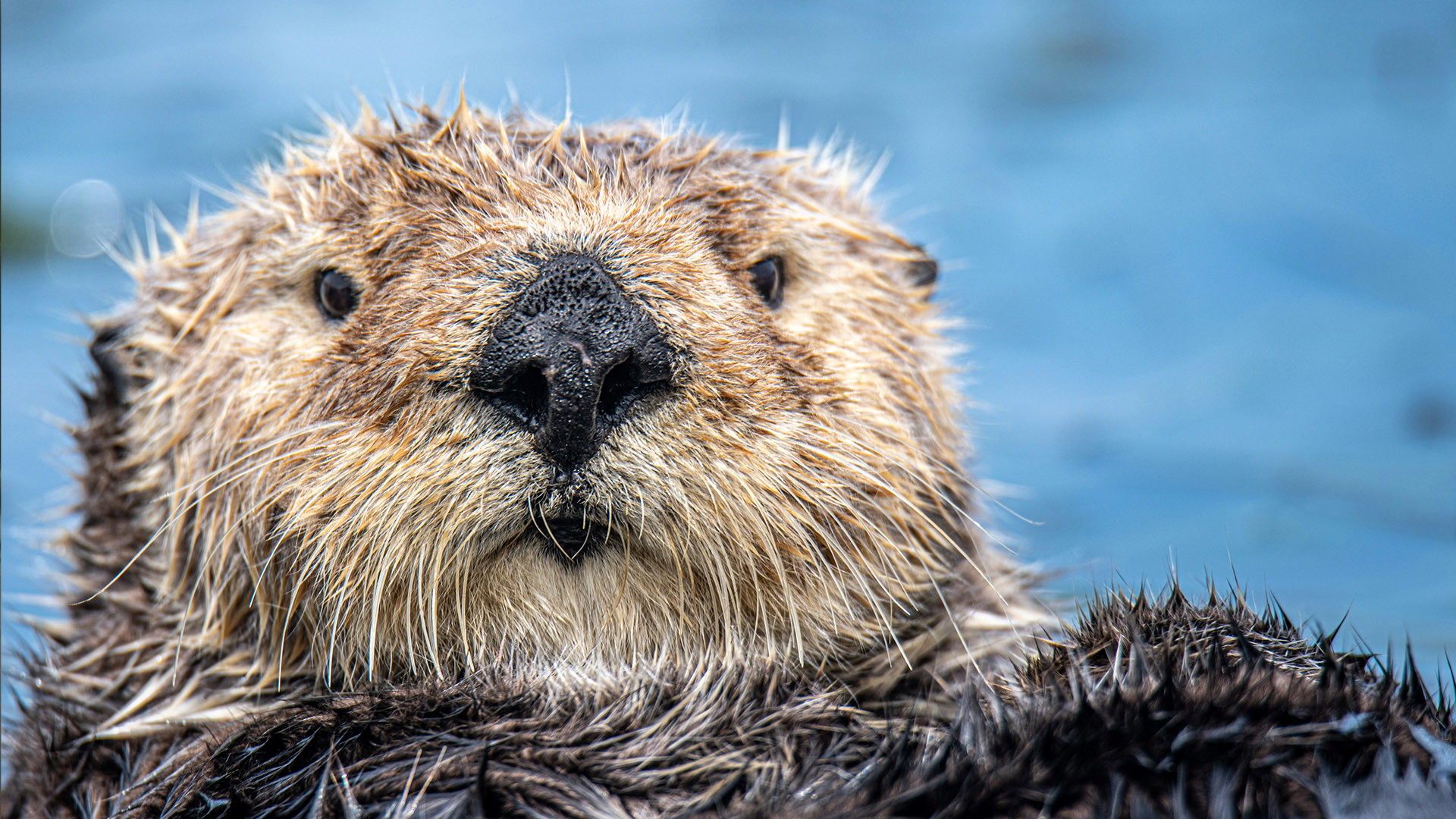
Value of Guided Wildlife Tours
For many visitors, particularly those with limited time or prior experience in otter spotting, joining a local guided wildlife tour can significantly enhance the experience and increase the chances of a successful sighting.
Benefits of Expert Guidance
Local wildlife tours offer numerous advantages. Guides such as Peter Hall and Andrew are experienced wildlife watchers with extensive local knowledge of Mull’s terrain, tides, and otter territories. Their expertise allows them to take visitors to “perfect spots” where otters are more likely to be found. This expertise acts as a force multiplier for visitors with limited time or experience, significantly enhancing the chances of a successful and ethically sound encounter.
Guides are skilled in observing wildlife without causing disturbance and can even provide instruction on how to photograph otters correctly and responsibly, especially for those without prior experience. Tours often provide high-quality binoculars and telescopes for client use, eliminating the need for visitors to bring their own specialized optics.
Beyond otters, these tours frequently offer opportunities to observe a wide array of other iconic Mull wildlife, including eagles, red deer, and seals.
Reputable Tour Operators
Several reputable tour operators on Mull specialize in wildlife excursions that frequently include otter spotting opportunities:
- Mull Wildlife Tours: Led by Peter Hall, an experienced wildlife watcher. These tours are intimate, accommodating no more than four people, ensuring a personal experience. Tours typically commence around 10:00 AM or 10:30 AM from Craignure Ferry Terminal, with collection also available from Fishnish. The inclusive cost of £75 per person covers tea, coffee, a first-class packed lunch, and the use of binoculars, a telescope, and reference books. Exclusive tours can be tailored for photographers, allowing stops at their convenience. Early booking is recommended.
- WildlifeonMull: Guided by Andrew, who boasts over 30 years of living on the island. These tours focus on Mull’s diverse wildlife, stunning landscapes, and captivating history. The full-day tour costs £65 for adults and £40 for children aged 7-12. Testimonials frequently highlight sightings of mother otters with cubs. Contact can be made via their website, phone, or email.
The existence and popularity of these guided tours demonstrate a positive feedback loop between wildlife conservation and the local economy. Mull’s healthy wildlife populations attract tourists, and in turn, this tourism generates income for local businesses and residents.
This economic benefit creates a powerful incentive for the local community to protect the very wildlife that draws visitors, fostering a symbiotic relationship between conservation and economic prosperity. This suggests that supporting reputable local tour operators not only enhances a personal experience but also contributes directly to the sustainable management and long-term protection of Mull’s unique ecosystem.
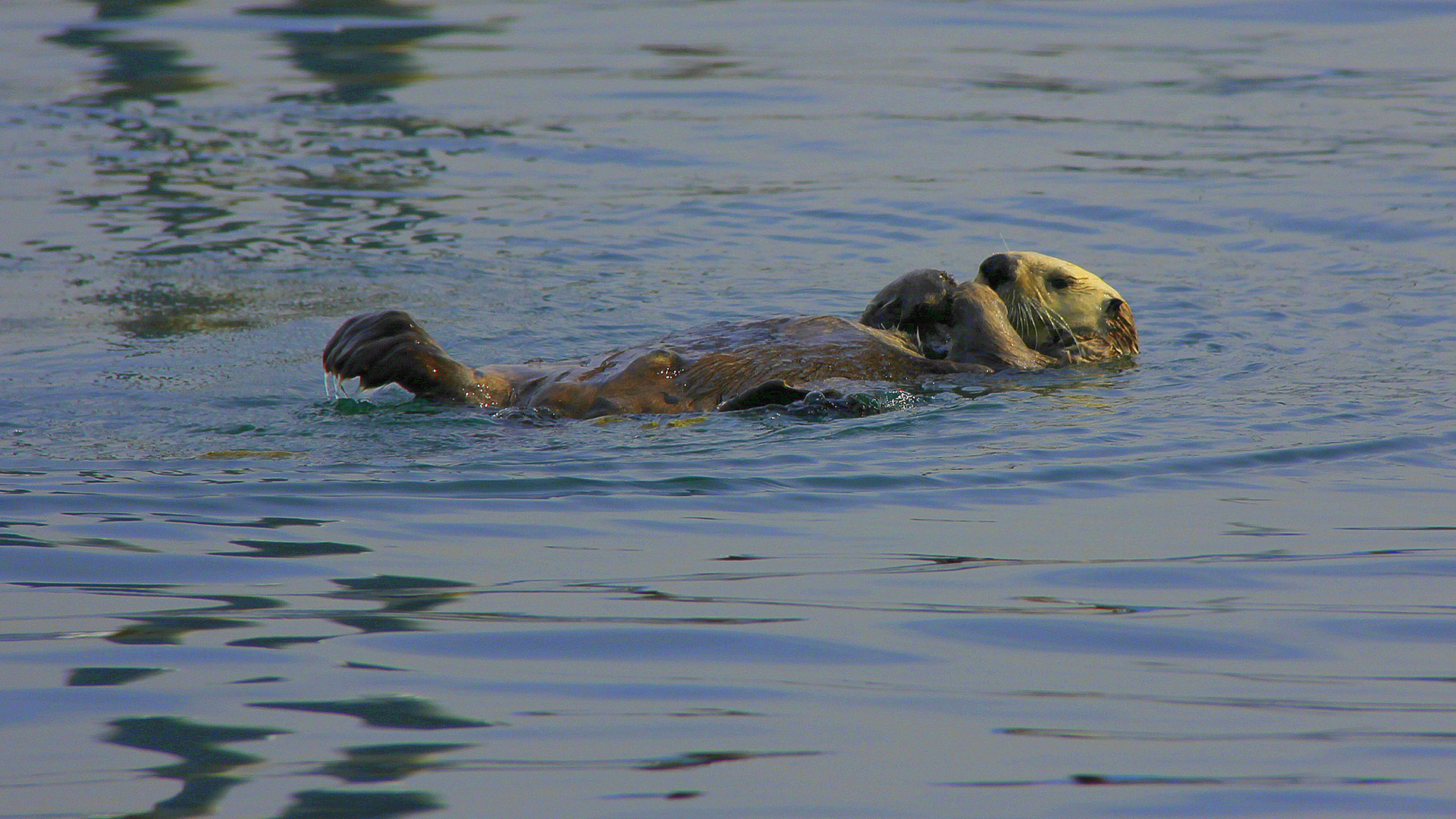
Conclusion: A Rewarding and Responsible Encounter
Spotting an otter on the Isle of Mull is truly a magical experience. It offers a rare privilege to witness these enchanting animals playing, grooming, and foraging in their pristine natural habitat. The Isle of Mull provides a unique opportunity to observe Eurasian otters, a species that is otherwise rare and protected across much of its range.
Respecting the Wildness of Otters
Achieving a successful sighting hinges on thorough preparation, unwavering patience, and, most importantly, strict adherence to ethical viewing guidelines. The objective extends beyond merely seeing an otter; it involves doing so in a manner that profoundly respects their wildness and actively contributes to their continued presence on Mull. Visitors are urged to maintain a safe distance and to refrain from feeding or disturbing otters in any way.
It is a fundamental principle that no photograph, however compelling, is worth the cost of disturbing the animal. By diligently following the guidelines outlined in this report, visitors play a crucial role in the protection of this “Near Threatened” species, ensuring that future generations can also experience the profound wonder of Mull’s otters thriving in their natural environment.

